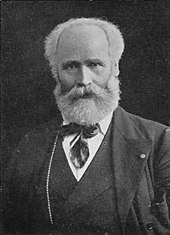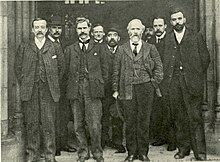
James Ramsay MacDonald was a British statesman and politician who was Prime Minister of the United Kingdom, the first who belonged to the Labour Party, leading minority Labour governments for nine months in 1924 and again between 1929 and 1931. From 1931 to 1935, he headed a National Government dominated by the Conservative Party and supported by only a few Labour members. MacDonald was expelled from the Labour Party as a result.

James Keir Hardie was a Scottish trade unionist and politician. He was a founder of the Labour Party, and was its first parliamentary leader from 1906 to 1908.

The Independent Labour Party (ILP) was a British political party of the left, established in 1893 at a conference in Bradford, after local and national dissatisfaction with the Liberals' apparent reluctance to endorse working-class candidates. A sitting independent MP and prominent union organiser, Keir Hardie, became its first chairman.
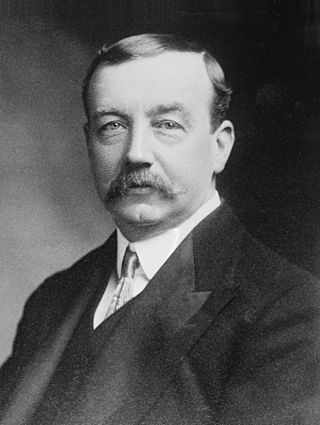
Arthur Henderson was a British iron moulder and Labour politician. He was the first Labour cabinet minister, won the Nobel Peace Prize in 1934 and, uniquely, served three separate terms as Leader of the Labour Party in three different decades. He was popular among his colleagues, who called him "Uncle Arthur" in acknowledgement of his integrity, his devotion to the cause and his imperturbability. He was a transitional figure whose policies were, at first, close to those of the Liberal Party. The trades unions rejected his emphasis on arbitration and conciliation, and thwarted his goal of unifying the Labour Party and the trade unions.

Richard Bell was one of the first two British Labour Members of Parliament, and the first for an English constituency, elected after the formation of the Labour Representation Committee in 1900.

The Gladstone–MacDonald pact of 1903 was a secret informal electoral agreement negotiated by Herbert Gladstone, Liberal Party Chief Whip, and Ramsay MacDonald, Secretary of the Labour Representation Committee (LRC). The Liberal Party agreed to withdraw parliamentary candidates in some constituencies where the LRC was also standing in order to make sure the anti-Conservative vote was not split.
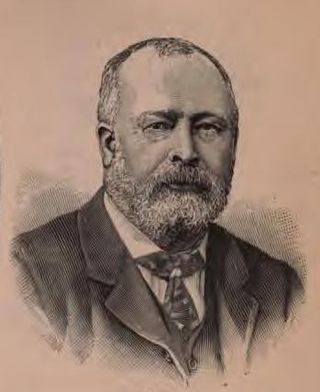
Henry Broadhurst was a leading early British trade unionist and a Lib-Lab politician who sat in the House of Commons for various Midlands constituencies between 1880 and 1906.
James MacDonald was a British trade unionist.
The 1888 Mid Lanarkshire by-election was a parliamentary by-election held on 27 April 1888 for the House of Commons constituency of Mid Lanarkshire in Scotland.
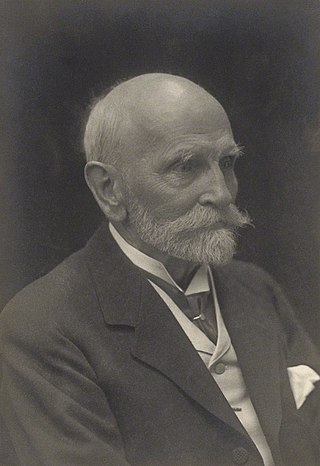
Sir William Pollard Byles was a British newspaper owner and radical Liberal politician.
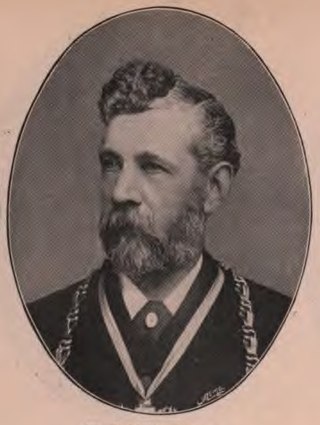
A 1894 by-election was held for the British House of Commons constituency of Sheffield Attercliffe on 5 July 1894. It was the first parliamentary election contested by the Independent Labour Party.
The Organisation of Scottish Labour is a body established under the national rules of the UK Labour Party.
The Labour Electoral Association was a political organisation in the United Kingdom which aimed to get working men elected to Parliament.
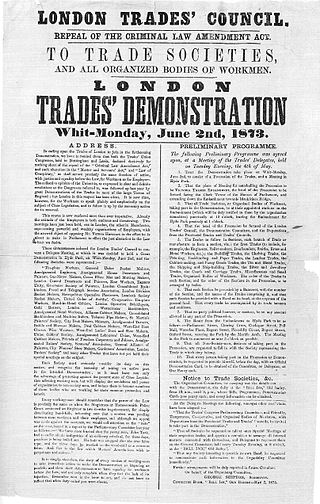
The London Trades Council was an early labour organisation, uniting London's trade unionists. Its modern successor organisation is the Greater London Association of Trades (Union) Councils
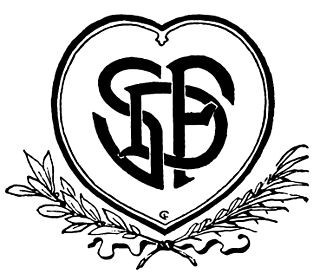
The Social Democratic Federation (SDF) was established as Britain's first organised socialist political party by H. M. Hyndman, and had its first meeting on 7 June 1881. Those joining the SDF included William Morris, George Lansbury, James Connolly and Eleanor Marx. However, Friedrich Engels, Karl Marx's long-term collaborator, refused to support Hyndman's venture. Many of its early leading members had previously been active in the Manhood Suffrage League.

Frederick Brocklehurst (1866–1926) was a British political activist best known for his early involvement in the socialist movement.

Peter Francis Curran was a British trade unionist and politician.

Thomas Proctor was a British trade unionist and Labour Party politician.
Several British members of Parliament have been sponsored by mining trade unions. Many were sponsored by the National Union of Mineworkers, its predecessor the Miners' Federation of Great Britain, and the local trade unions which preceded it.
Robert Banner was a Scottish socialist politician and trade unionist.

